Abstract
Undecyl acetate esterase from Pseudomonas cepacia grown on 2-tridecanone was strongly inhibited by organophosphates and other esterase inhibitors. Also, p-chloromercuribenzoate at 1 × 10−4 M showed a 70% inhibition of esterase activity. The enzyme hydrolyzed both aliphatic and aromatic acetate esters at substrate concentrations of 0.25 M. Under these conditions the highest reaction rate was toward undecyl acetate. No lipase or proteolytic activity was demonstrated. Undecyl acetate esterase was classified as a carboxylesterase (B-esterase). Cell-free activity studies on the production of undecyl acetate esterase grown on different carbon sources plus zymogram studies demonstrated that the enzyme was inducible when 2-tridecanone, 2-tridecanol, undecyl acetate and, to a lesser extent, 1-undecanol were growth substrates. Induction of undecyl acetate esterase during oxidation of 2-tridecanone supports the view that undecyl acetate is an intermediate in the degradation of the methyl ketone.
Full text
PDF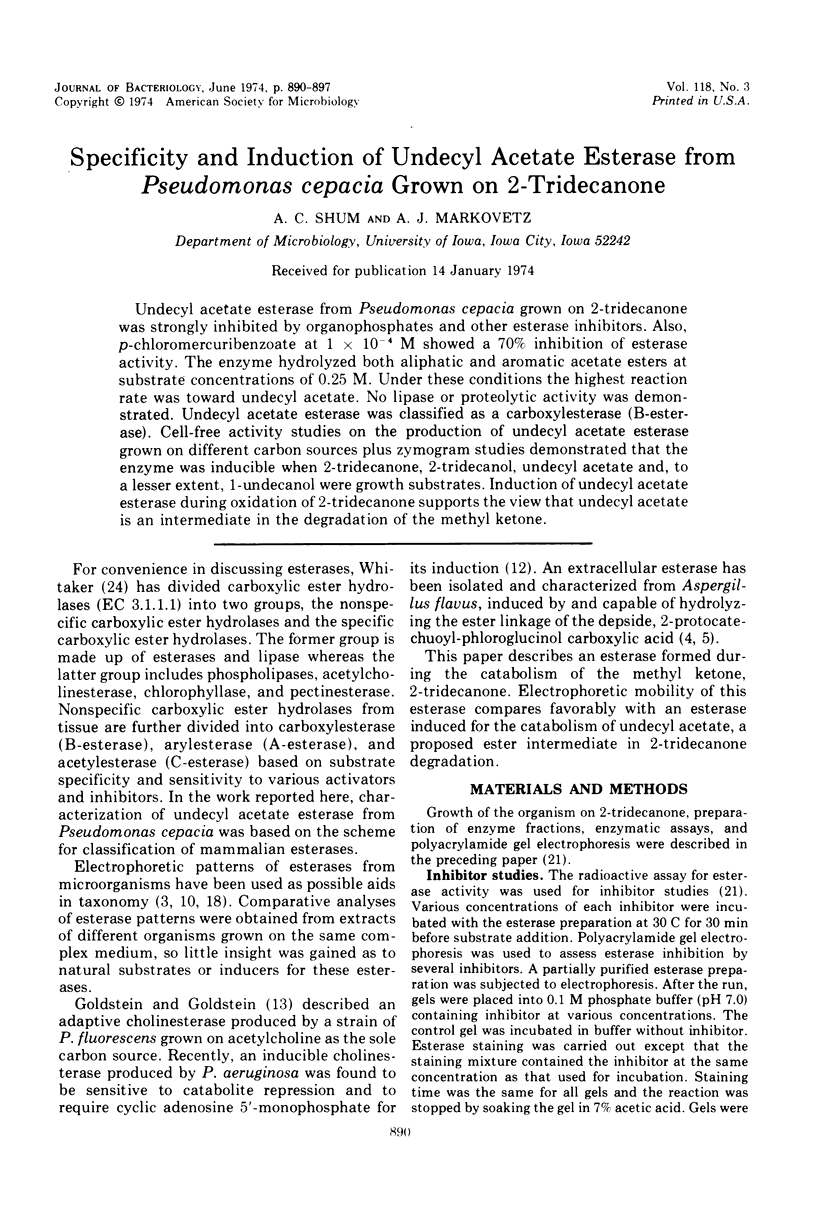
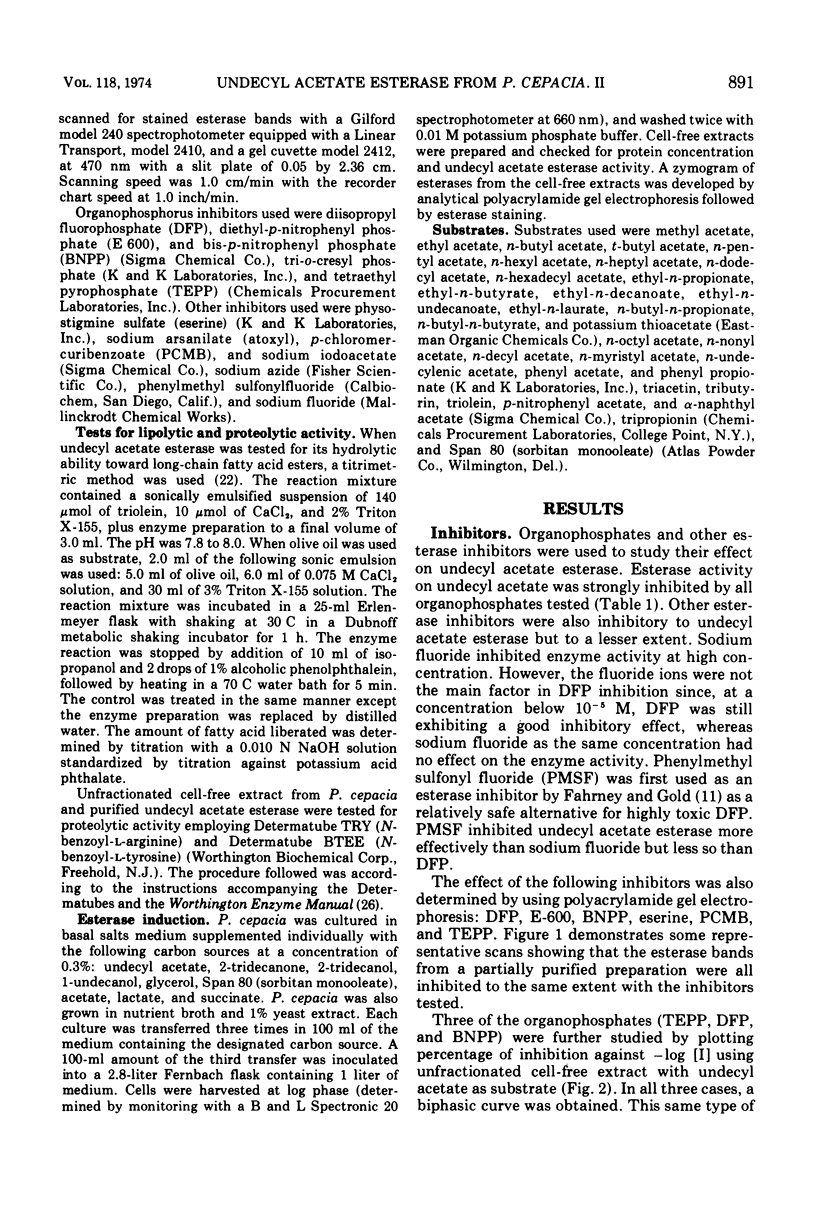
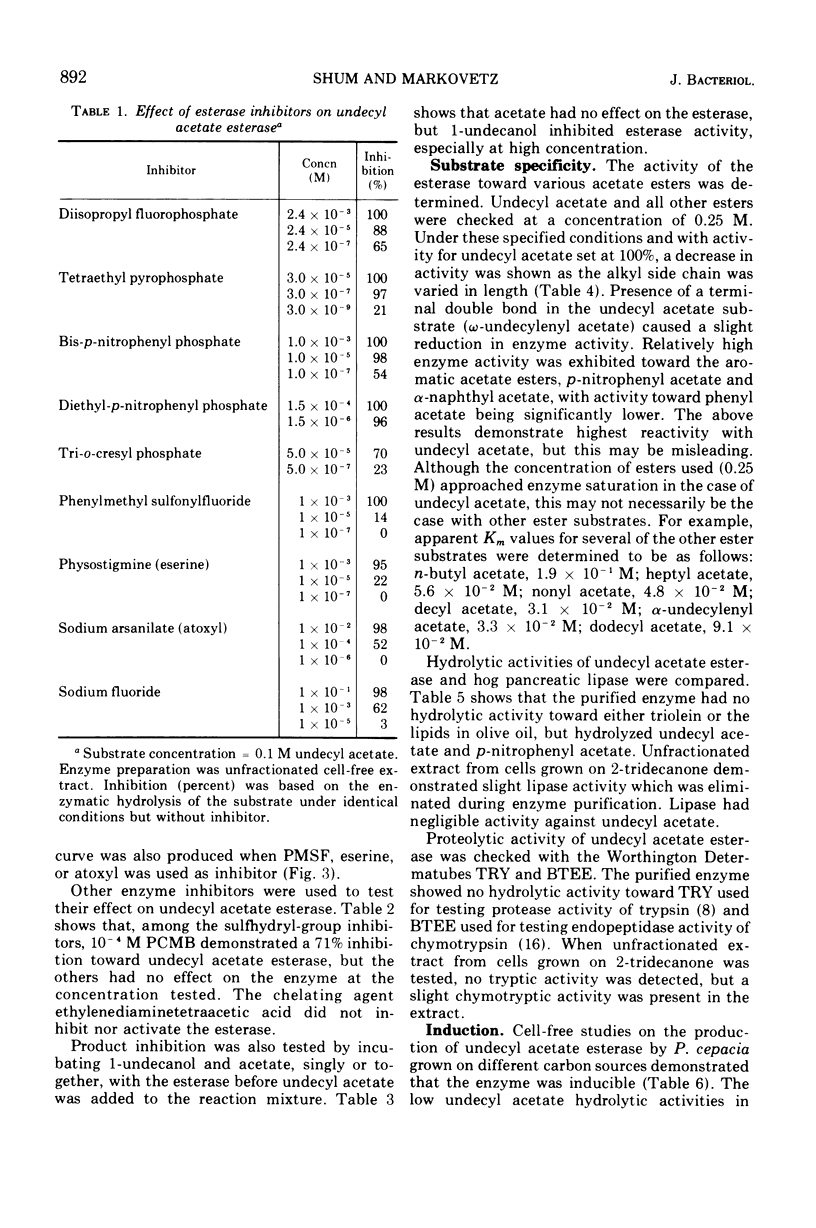
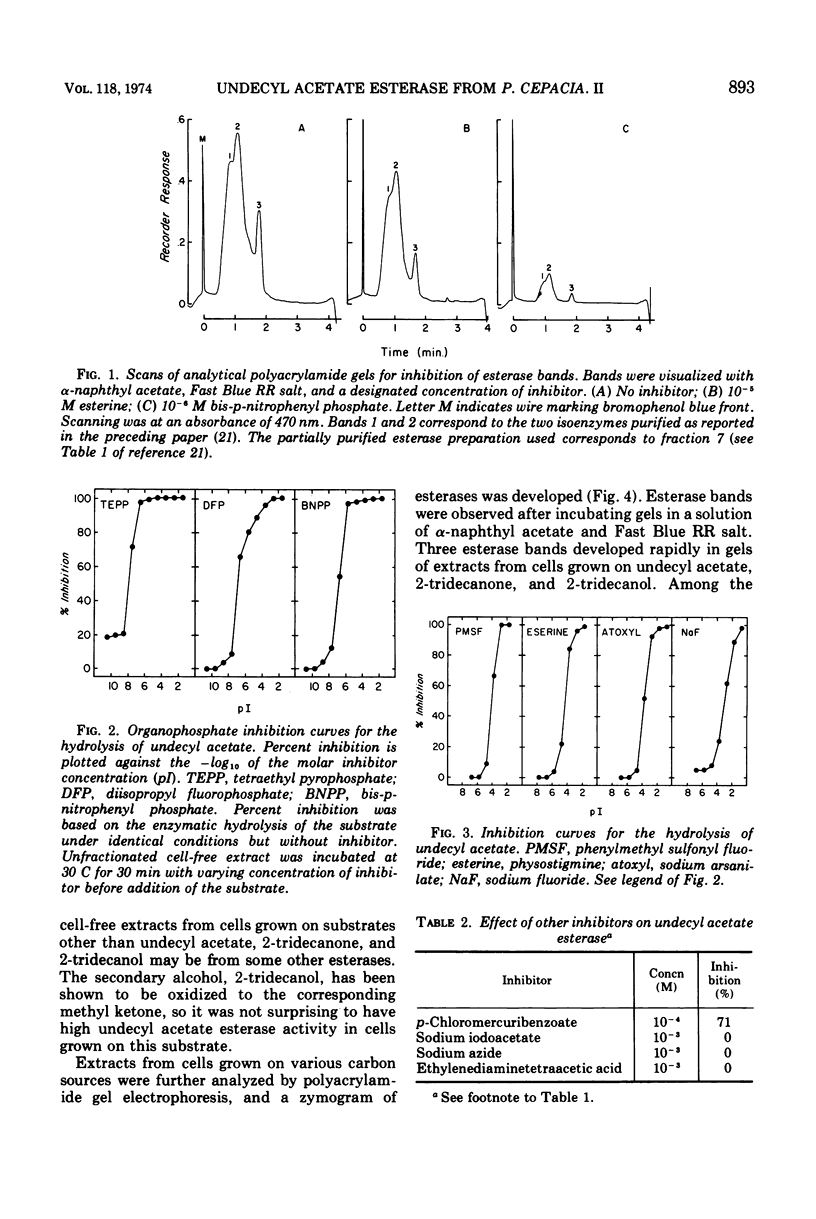
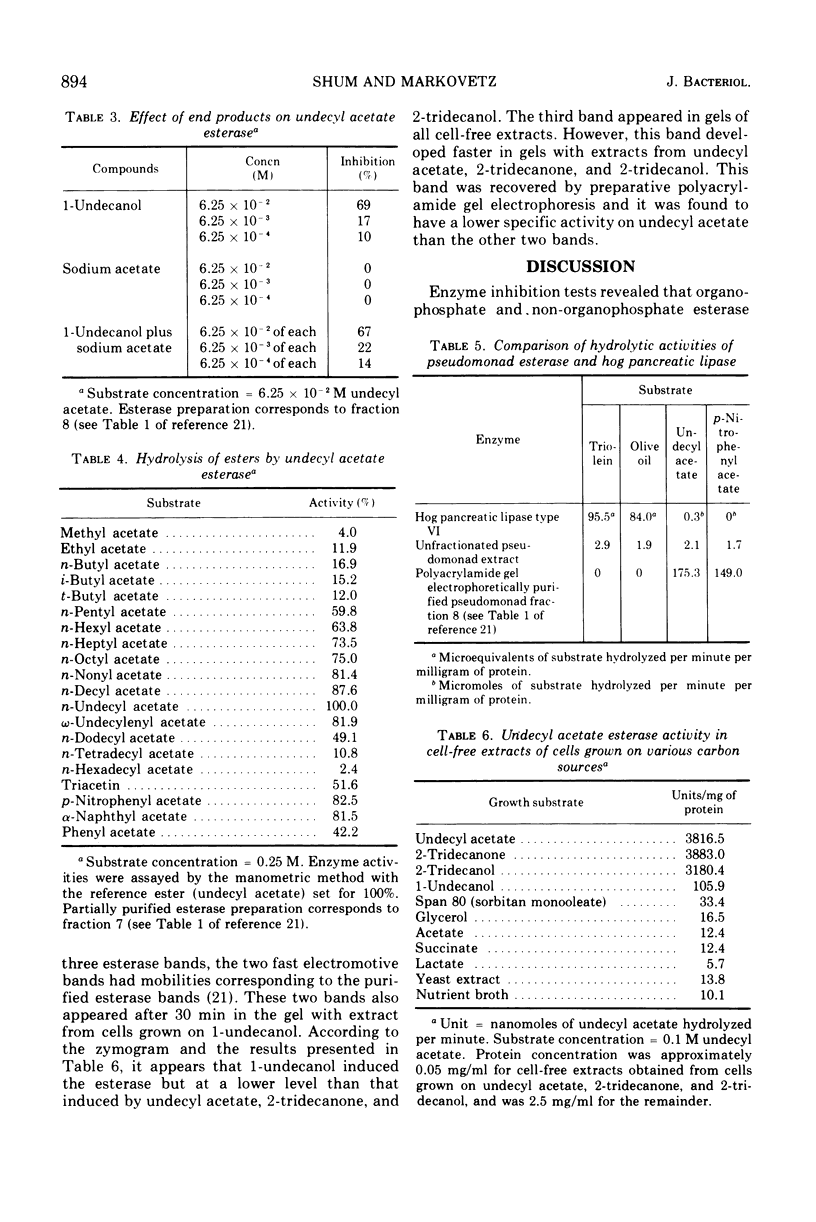
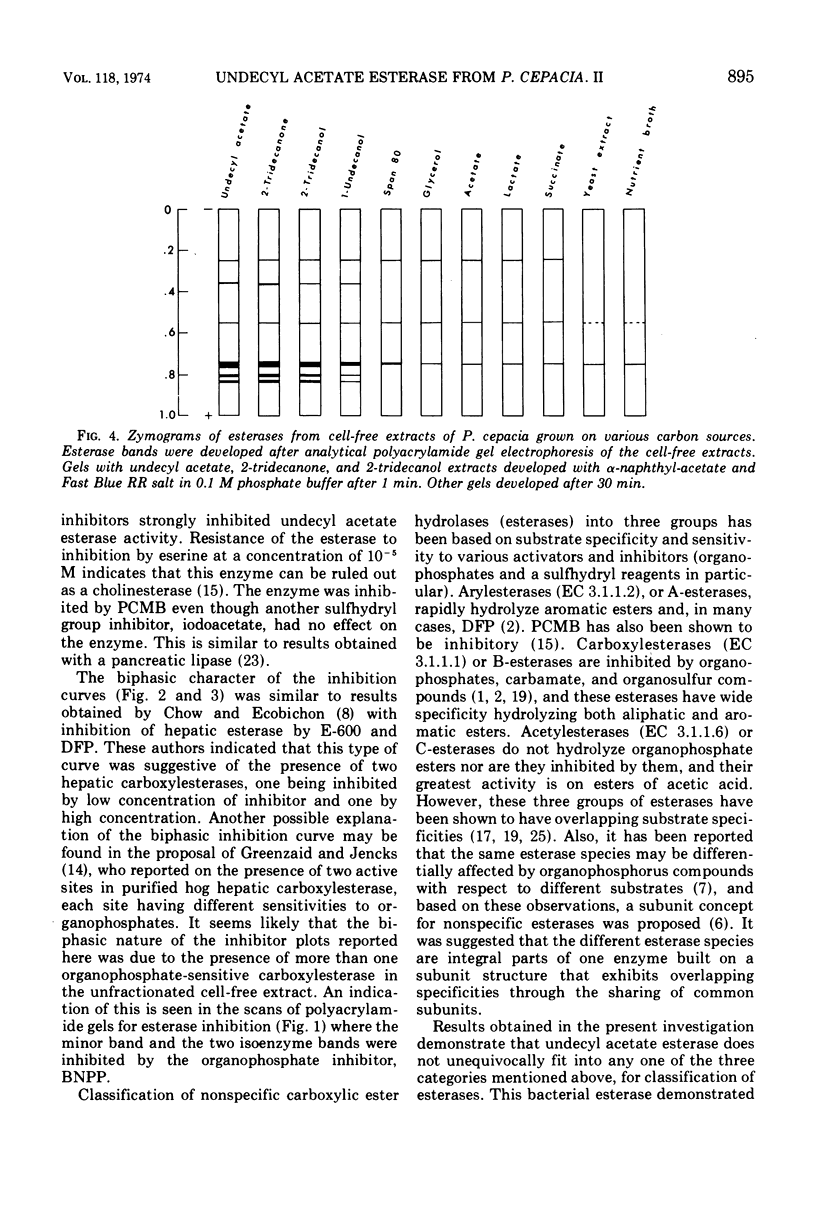
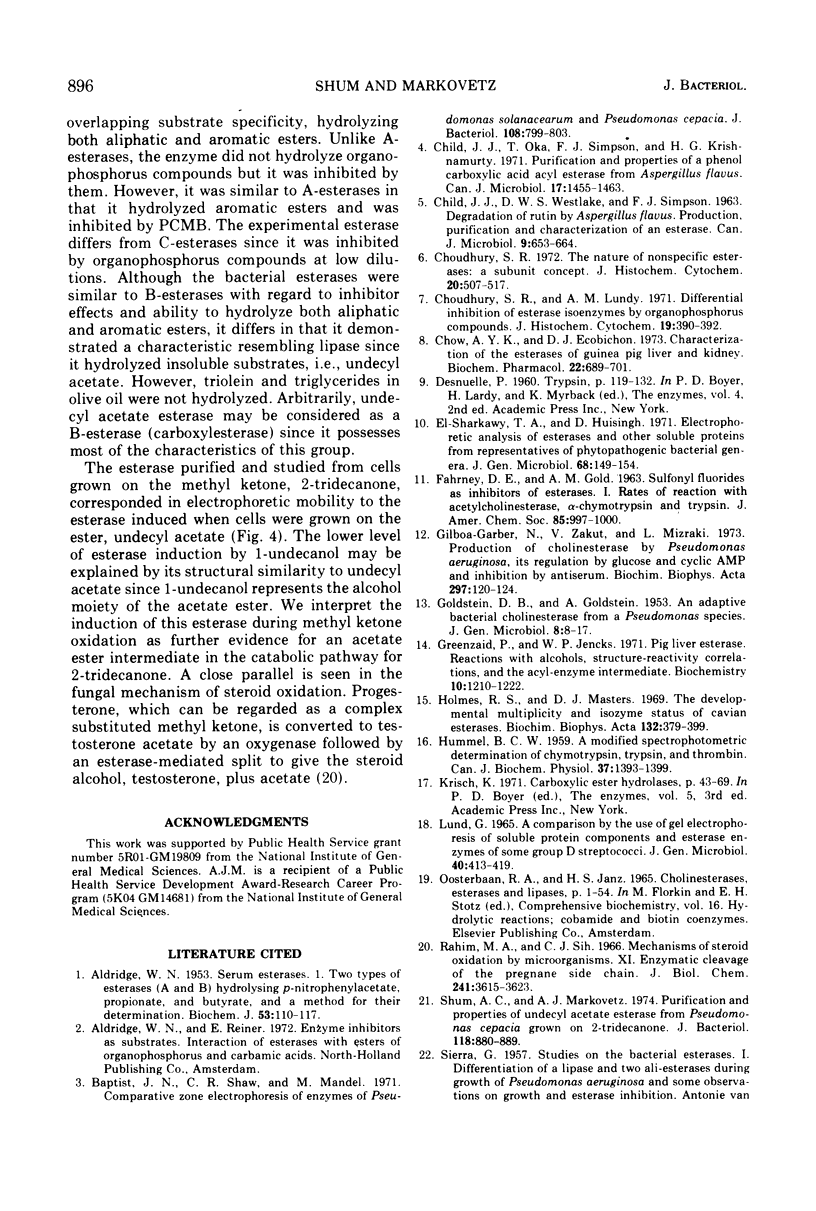

Selected References
These references are in PubMed. This may not be the complete list of references from this article.
- ALDRIDGE W. N. Serum esterases. I. Two types of esterase (A and B) hydrolysing p-nitrophenyl acetate, propionate and butyrate, and a method for their determination. Biochem J. 1953 Jan;53(1):110–117. doi: 10.1042/bj0530110. [DOI] [PMC free article] [PubMed] [Google Scholar]
- Baptist J. N., Shaw C. R., Mandel M. Comparative zone electrophoresis of enzymes of Pseudomonas solanacearum and Pseudomonas cepacia. J Bacteriol. 1971 Nov;108(2):799–803. doi: 10.1128/jb.108.2.799-803.1971. [DOI] [PMC free article] [PubMed] [Google Scholar]
- Child J. J., Oka T., Simpson F. J., Krishnamurty H. G. Purification and properties of a phenol carboxylic acid acyl esterase from Aspergillus flavus. Can J Microbiol. 1971 Nov;17(11):1455–1463. doi: 10.1139/m71-231. [DOI] [PubMed] [Google Scholar]
- Choudhury S. R., Lundy A. M. Differential inhibition of esterase isozymes by organophosphorus compounds. J Histochem Cytochem. 1971 Jun;19(6):390–392. doi: 10.1177/19.6.390. [DOI] [PubMed] [Google Scholar]
- Chow A. Y., Ecobichon D. J. Characterization of the esterases of guinea pig liver and kidney. Biochem Pharmacol. 1973 Mar 15;22(6):689–701. doi: 10.1016/0006-2952(73)90401-2. [DOI] [PubMed] [Google Scholar]
- GOLDSTEIN D. B., GOLDSTEIN A. An adaptive bacterial cholinesterase from a Pseudomonas species. J Gen Microbiol. 1953 Feb;8(1):8–17. doi: 10.1099/00221287-8-1-8. [DOI] [PubMed] [Google Scholar]
- Gilboa-Garber N., Zakut V., Mizrahi L. Production of cholinesterase by Pseudomonas aeruginosa, its regulation by glucose and cyclic AMP and inhibition by antiserum. Biochim Biophys Acta. 1973 Jan 24;297(1):120–124. doi: 10.1016/0304-4165(73)90055-x. [DOI] [PubMed] [Google Scholar]
- Greenzaid P., Jencks W. P. Pig liver esterase. Reactions with alcohols, structure-reactivity correlations, and the acyl-enzyme intermediate. Biochemistry. 1971 Mar 30;10(7):1210–1222. doi: 10.1021/bi00783a018. [DOI] [PubMed] [Google Scholar]
- HUMMEL B. C. A modified spectrophotometric determination of chymotrypsin, trypsin, and thrombin. Can J Biochem Physiol. 1959 Dec;37:1393–1399. [PubMed] [Google Scholar]
- Holmes R. S., Masters C. J. The developmental multiplicity and isoenzyme status of cavian esterases. Biochim Biophys Acta. 1967 Mar 15;132(2):379–399. doi: 10.1016/0005-2744(67)90157-x. [DOI] [PubMed] [Google Scholar]
- Lund B. M. A comparison by the use of gel electrophoresis of soluble protein components and esterase enzymes of some group D Streptococci. J Gen Microbiol. 1965 Sep;40(3):413–419. doi: 10.1099/00221287-40-3-413. [DOI] [PubMed] [Google Scholar]
- Rahm M. A., Sih C. J. Mechanisms of steroid oxidation by microorganisms. XI. Enzymatic cleavage of the pregnane side chain. J Biol Chem. 1966 Aug 10;241(15):3615–3623. [PubMed] [Google Scholar]
- SIERRA G. Studies on bacterial esterases. I. Differentiation of a lipase and two ali-esterases during the growth of Pseudomonas aeruginosa and some observations on growth and esterase inhibition. Antonie Van Leeuwenhoek. 1957;23(3-4):241–265. doi: 10.1007/BF02545877. [DOI] [PubMed] [Google Scholar]
- Shum A. C., Markovetz A. J. Purification and properties of undecyl acetate esterase from Pseudomonas cepacia grown on 2-tridecanone. J Bacteriol. 1974 Jun;118(3):880–889. doi: 10.1128/jb.118.3.880-889.1974. [DOI] [PMC free article] [PubMed] [Google Scholar]
- Verger R., Sarda L., Desnuelle P. On the sulfhydryl groups of porcine pancreatic lipase and their possible role in the activity of the enzyme. Biochim Biophys Acta. 1971 Sep 22;242(3):580–592. doi: 10.1016/0005-2744(71)90151-3. [DOI] [PubMed] [Google Scholar]


